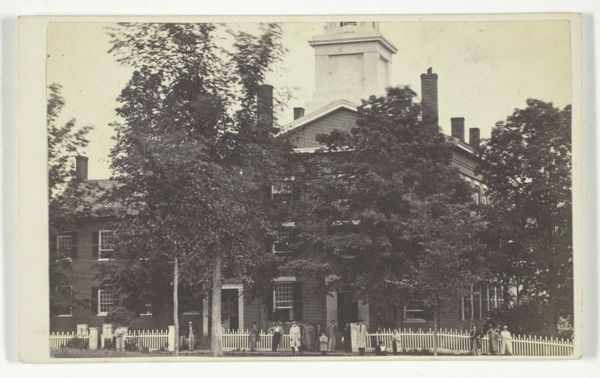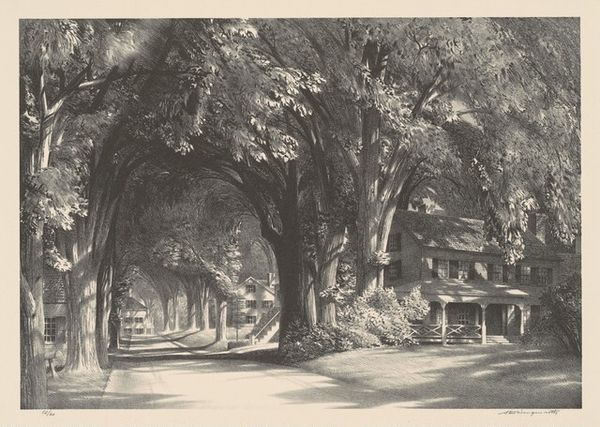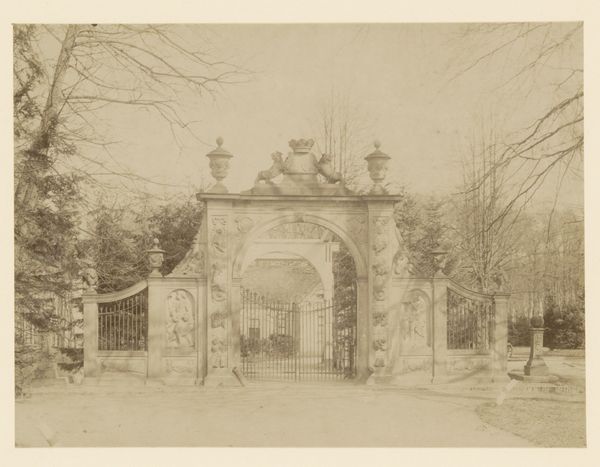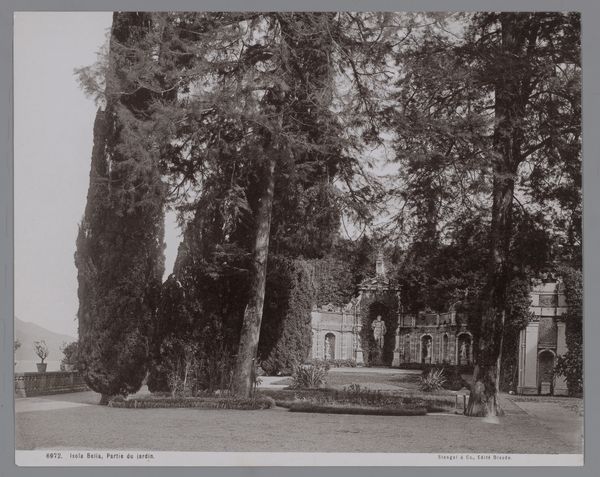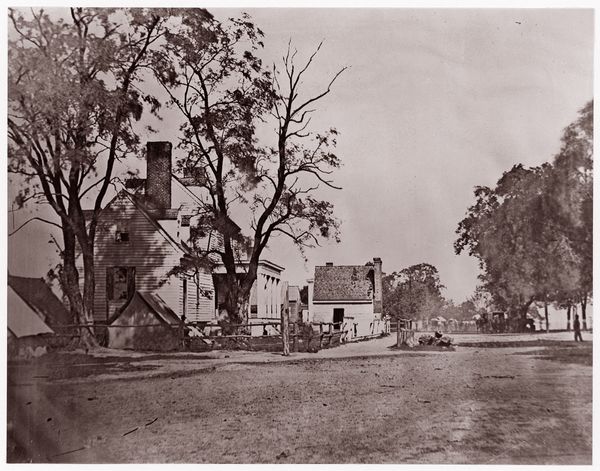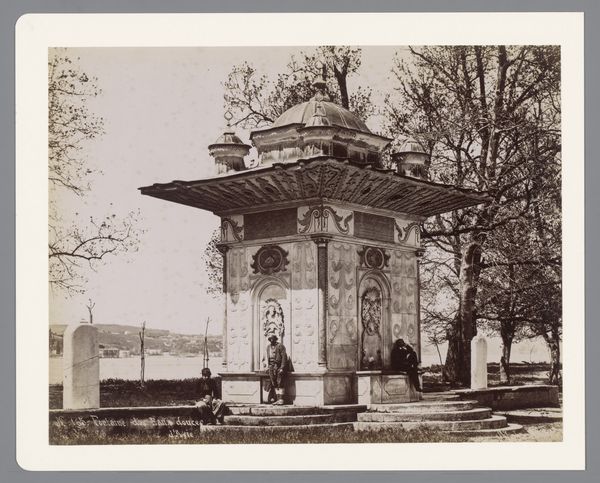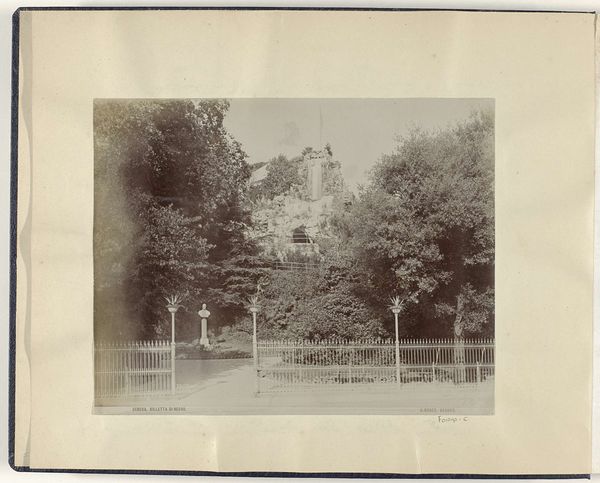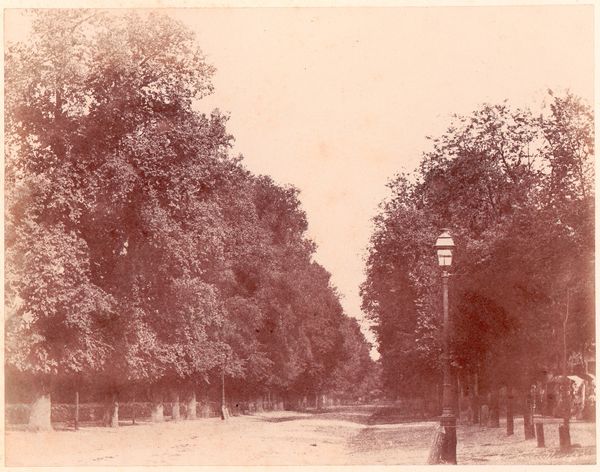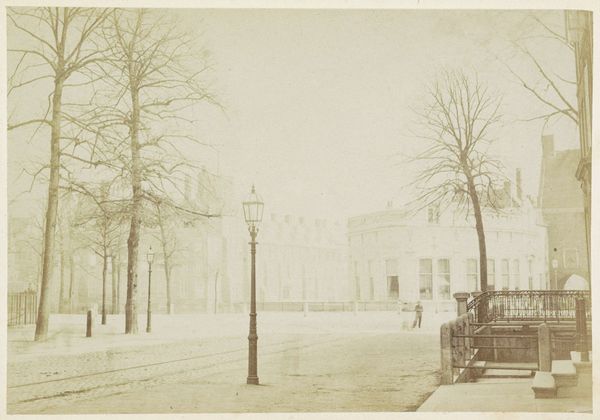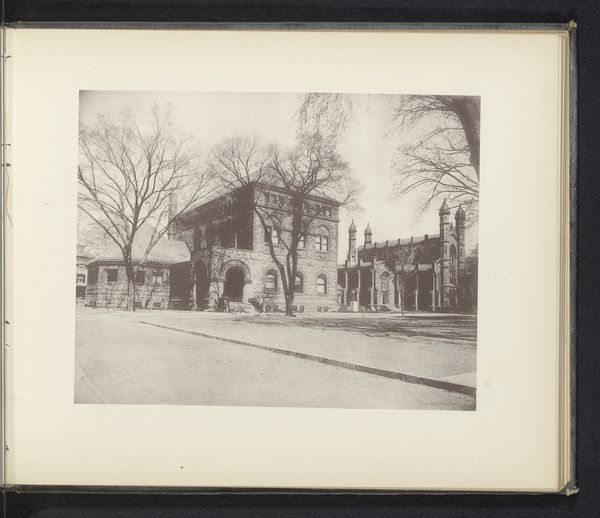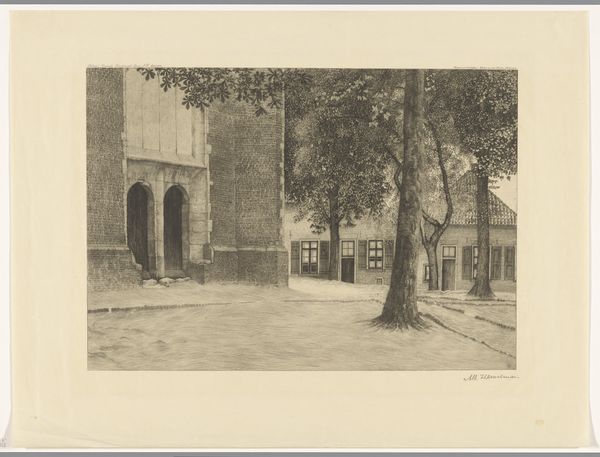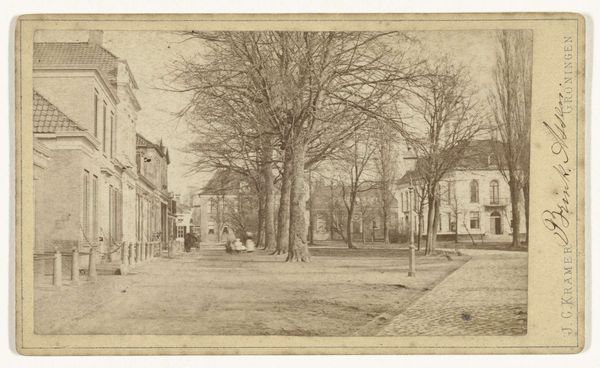
Dimensions: Image: 20.9 x 29.8 cm (8 1/4 x 11 3/4 in.) Mount: 46 x 60.5 cm (18 1/8 x 23 13/16 in.)
Copyright: Public Domain
Curator: We're looking at Edouard Baldus' photograph, "Nîmes, Temple de Diane," taken between 1861 and 1864. The image captures a classical ruin in Nîmes, France, printed with a stark formality, using a rich sepia tone. Editor: Immediately, I feel a profound sense of melancholy. The skeletal trees framing the weathered stone—it speaks to the ephemerality of human endeavor against the endurance of nature's processes. Curator: Baldus was meticulously constructing a dialogue between nature and classical structure. Observe the bare branches that create a delicate, almost lace-like network against the geometric solidity of the temple. His careful arrangement invites reflection on themes of decay and permanence. Editor: And yet, there's also a colonial gaze here. Baldus, commissioned during a time of French imperialism, aestheticizes the ruins, perhaps obscuring the violence inherent in constructing and then excavating such sites. Curator: Surely, you cannot discount Baldus’ mastery of light and shadow, its contribution to form? How the light plays across the rough texture of the stone… Look closer. You’ll see the tonal gradations reveal form; they lend an almost sculptural presence to the architecture. The contrast draws the eye through the intricate surface, doesn't it? Editor: Yes, but that very focus diverts attention from uncomfortable histories. Whose labor built this temple? Whose beliefs were suppressed by its construction? How do the citizens of Nîmes interact with it now, within the layered histories of its place? Curator: I grant that, by modern eyes, he may be romanticizing this historical relic. However, if we stay with what is undeniably in front of us, the symmetry that is ever present is striking; the use of scale allows for the scene to evoke a deeper meaning, beyond any singular time. Editor: It reminds us that the meanings we assign to these images, like ruins themselves, are always under construction, revealing new facets depending on who is looking and when. Curator: True. And Baldus' careful construction provides a firm foundation for those ongoing reevaluations.
Comments
No comments
Be the first to comment and join the conversation on the ultimate creative platform.
